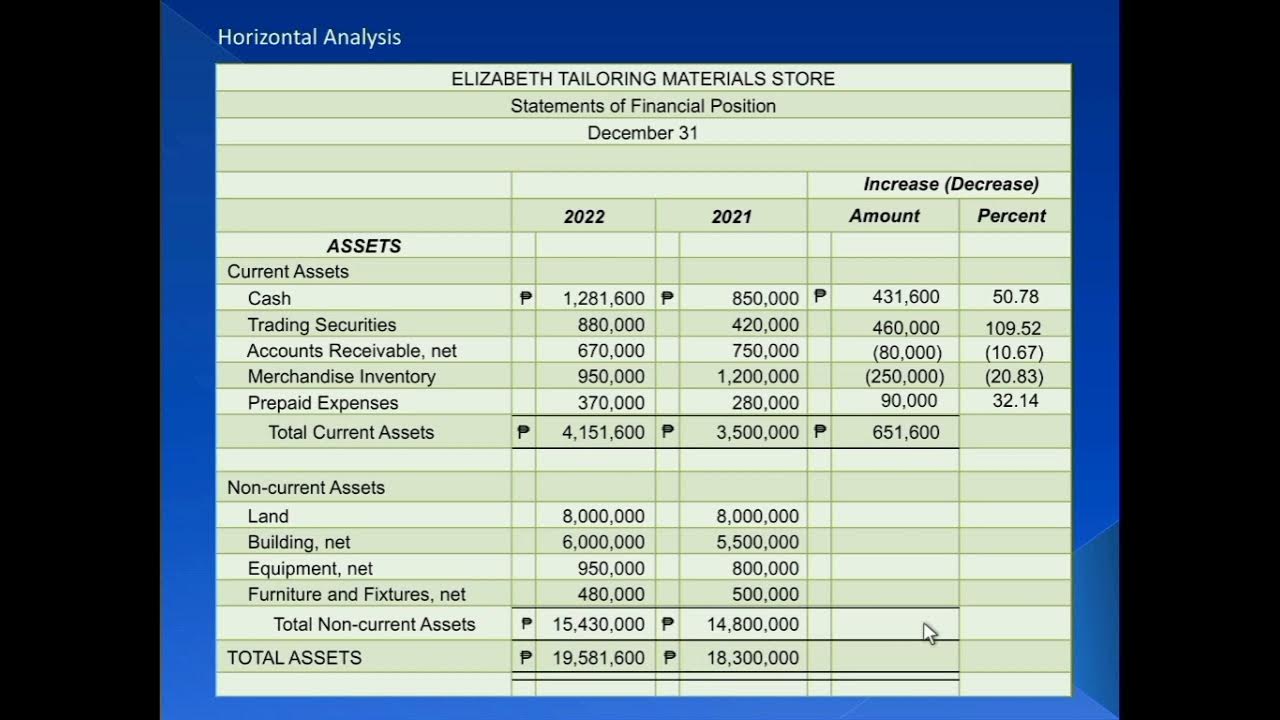Mata Kuliah: Analisa Laporan Keuangan - Menganalisa Laporan Keuangan
Summary
TLDRIn this lecture, Nurul Husna introduces financial ratio analysis, focusing on liquidity ratios. The session covers the definition of financial ratios, their importance, and the four main types: liquidity, leverage, activity, and profitability ratios. Special emphasis is placed on calculating and interpreting the current ratio and quick ratio, which assess a company's ability to meet short-term obligations. Through practical examples using real financial data, students learn how to apply these ratios to evaluate a company's liquidity. The session concludes with a comparison of two companies, Distrima Rena and PD Hadian, highlighting the importance of liquidity ratios in financial analysis.
Takeaways
- 😀 Financial ratios are essential tools to assess a company's financial performance and health.
- 😀 The four main types of financial ratios are: liquidity, leverage, activity, and profitability ratios.
- 😀 Liquidity ratios measure a company's ability to meet short-term obligations with its short-term assets.
- 😀 The two primary liquidity ratios are the current ratio and the quick ratio.
- 😀 The current ratio is calculated by dividing current assets by current liabilities.
- 😀 A current ratio greater than 1 indicates that a company can cover its short-term liabilities with its short-term assets.
- 😀 The quick ratio excludes inventory from current assets to focus on the most liquid assets.
- 😀 A quick ratio above 1 shows that a company can meet its short-term liabilities with its most liquid assets.
- 😀 Case studies of Distributor Rena and PD Hadian illustrated how to calculate and interpret current and quick ratios.
- 😀 Distributor Rena had a better liquidity position compared to PD Hadian, with a higher current ratio and quick ratio.
- 😀 Understanding and calculating financial ratios helps investors and analysts evaluate the financial stability of a company.
Q & A
What is the primary focus of the lecture?
-The primary focus of the lecture is on analyzing financial statements through the use of financial ratios, specifically liquidity ratios such as the current ratio and quick ratio.
What are financial ratios used for in the analysis of financial statements?
-Financial ratios are used to assess a company's financial health, performance, and ability to meet its obligations. These ratios help to compare different financial metrics within the company, or with industry standards.
What are the four main types of financial ratios discussed in the lecture?
-The four main types of financial ratios discussed are: 1) Liquidity Ratios, 2) Leverage Ratios (Solvency Ratios), 3) Activity Ratios, and 4) Profitability Ratios.
What is the purpose of liquidity ratios?
-Liquidity ratios are used to measure a company's ability to meet its short-term financial obligations using its liquid assets.
What is the formula for calculating the current ratio?
-The formula for calculating the current ratio is: Current Assets / Current Liabilities. This ratio helps determine a company's ability to pay off its short-term liabilities with its short-term assets.
How does the quick ratio differ from the current ratio?
-The quick ratio is similar to the current ratio but excludes inventory from current assets. This is because inventory is not as easily liquidated as other current assets, such as cash or receivables.
Why is the quick ratio considered a more conservative measure of liquidity than the current ratio?
-The quick ratio is considered more conservative because it excludes inventory, which may not be easily converted to cash in the short term. This provides a clearer view of a company’s immediate liquidity position.
What does a current ratio of 4.8 indicate for Distributor Rena?
-A current ratio of 4.8 indicates that Distributor Rena has significantly more current assets than current liabilities, which suggests the company is in a strong position to meet its short-term obligations.
How is the quick ratio calculated, and what does a quick ratio of 2.9 mean for Distributor Rena?
-The quick ratio is calculated by subtracting inventory from current assets and then dividing by current liabilities. A quick ratio of 2.9 means that Distributor Rena can cover 2.9 times its short-term liabilities using its most liquid assets, excluding inventory.
What conclusions can be drawn from the comparison between Distributor Rena and PD Hadian's financial ratios?
-Distributor Rena has higher liquidity, with a current ratio of 4.8 and quick ratio of 2.9, indicating better short-term financial health compared to PD Hadian, whose current ratio is 2.8 and quick ratio is 1.65. Both companies are solvent, but Distributor Rena is in a stronger position to meet short-term liabilities.
Why is it important to understand financial ratios when considering investments or company performance?
-Understanding financial ratios is crucial when considering investments or assessing a company’s performance because they provide insights into the company’s ability to meet obligations, generate profit, and effectively manage its finances. This helps investors make informed decisions.
Outlines

This section is available to paid users only. Please upgrade to access this part.
Upgrade NowMindmap

This section is available to paid users only. Please upgrade to access this part.
Upgrade NowKeywords

This section is available to paid users only. Please upgrade to access this part.
Upgrade NowHighlights

This section is available to paid users only. Please upgrade to access this part.
Upgrade NowTranscripts

This section is available to paid users only. Please upgrade to access this part.
Upgrade NowBrowse More Related Video

Ratio Analysis Part 1

5.5 Analysis of Accounts IGCSE Business Studies

Financial Management; Financial Statement & Ratio Analysis

Ratio Analysis (Introduction) | A-Level, IB & BTEC Business

Financial Ratio Analysis【Dr. Deric】

Part 1: Financial Statements Analysis (Intro, Horizontal Analysis and Vertical Analysis)
5.0 / 5 (0 votes)